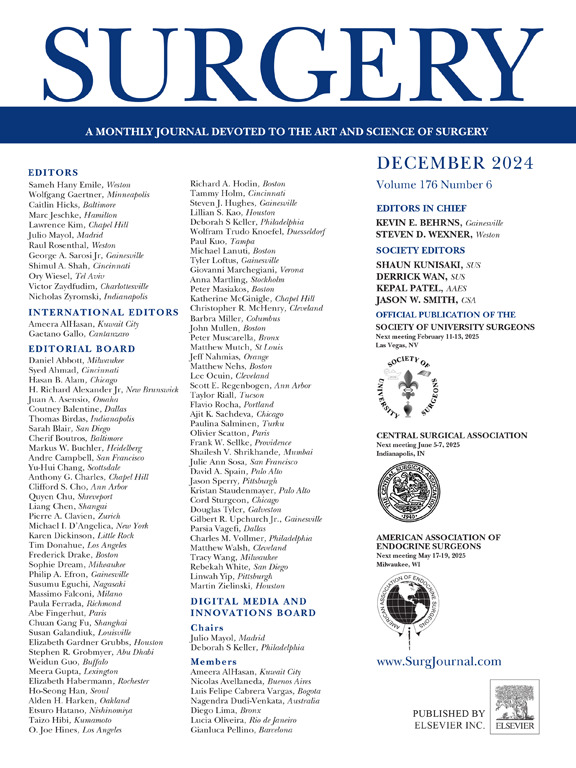Evolving surgical techniques for hepatolithiasis: A retrospective analysis of 164 liver resections at a Western center
IF 3.2
2区 医学
Q1 SURGERY
引用次数: 0
Abstract
Objective
To assess the outcomes of liver resection for primary intrahepatic lithiasis in a Western population, emphasizing the evolution of surgical techniques, including minimally invasive surgery, and their impact on patient outcomes.
Methods
We performed a retrospective analysis of 164 patients who underwent liver resection for primary intrahepatic lithiasis at the Hepatobiliary Surgery Unit, Fondazione Policlinico Universitario Agostino Gemelli IRCCS, Università Cattolica del Sacro Cuore, Rome, Italy. Data included demographics, surgical techniques, complications, and long-term outcomes. Minimally invasive surgery was introduced and progressively adopted, and its outcomes were compared with open surgery using propensity score matching. This represents the largest Western dataset on liver resection for primary intrahepatic lithiasis published to date.
Results
Liver resections were predominantly unilateral (96%) and commonly targeted the left liver (65%). Minimally invasive surgery use increased to 60% in the most recent period, showing reduced morbidity and shorter hospital stays compared with open surgery. Postoperative complications included bile fistula (16%) and septic events (30%). Independent risk factors for bile fistula were previous cholangitis (odds ratio, 4.7; P = .006) and major hepatectomy (odds ratio, 7.8; P = .002). Septic complications were associated with previous cholangitis (odds ratio, 2.3; P = .026), bilateral lithiasis (odds ratio, 4.0; P = .010), and major hepatectomy (odds ratio, 3.5; P = .003), with minimally invasive surgery providing a protective effect (odds ratio, 0.34; P = .028). Long-term follow-up revealed a 20% recurrence rate, linked to incomplete intraoperative stone clearance (hazard ratio, 2.645; P = .019) and biliary fistula (hazard ratio, 2.799; P = .016). Cholangiocarcinoma occurred in 6.6%, underscoring the need for surveillance.
Conclusion
Liver resection is an effective, curative treatment for primary intrahepatic lithiasis in Western populations. Minimally invasive surgery advancements significantly improve short-term outcomes, bridging the East-West gap in primary intrahepatic lithiasis management and highlighting the importance of individualized surgical approaches.

求助全文
约1分钟内获得全文
求助全文
来源期刊

Surgery
医学-外科
CiteScore
5.40
自引率
5.30%
发文量
687
审稿时长
64 days
期刊介绍:
For 66 years, Surgery has published practical, authoritative information about procedures, clinical advances, and major trends shaping general surgery. Each issue features original scientific contributions and clinical reports. Peer-reviewed articles cover topics in oncology, trauma, gastrointestinal, vascular, and transplantation surgery. The journal also publishes papers from the meetings of its sponsoring societies, the Society of University Surgeons, the Central Surgical Association, and the American Association of Endocrine Surgeons.
 求助内容:
求助内容: 应助结果提醒方式:
应助结果提醒方式:


